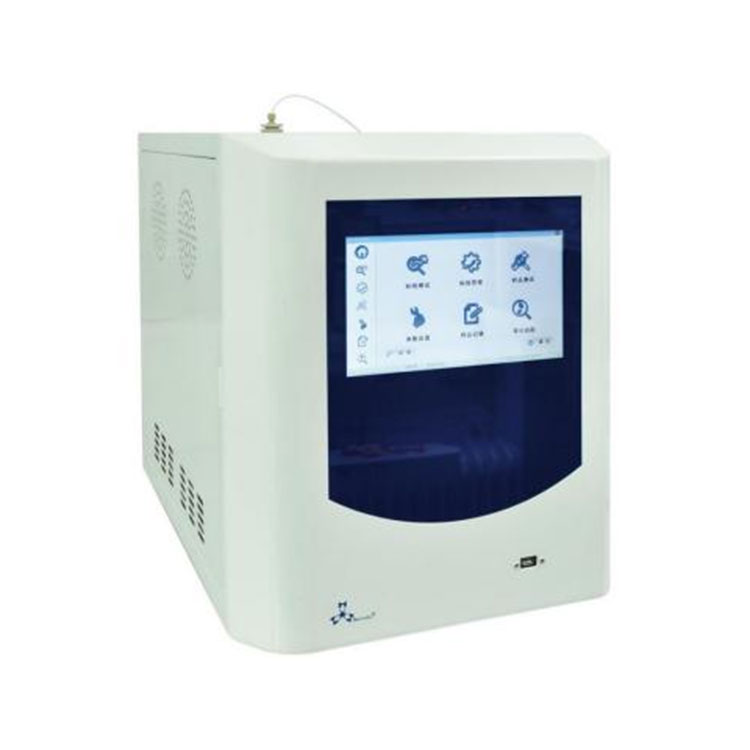- English
- Español
- Português
- русский
- Français
- 日本語
- Deutsch
- tiếng Việt
- Italiano
- Nederlands
- ภาษาไทย
- Polski
- 한국어
- Svenska
- magyar
- Malay
- বাংলা ভাষার
- Dansk
- Suomi
- हिन्दी
- Pilipino
- Türkçe
- Gaeilge
- العربية
- Indonesia
- Norsk
- تمل
- český
- ελληνικά
- український
- Javanese
- فارسی
- தமிழ்
- తెలుగు
- नेपाली
- Burmese
- български
- ລາວ
- Latine
- Қазақша
- Euskal
- Azərbaycan
- Slovenský jazyk
- Македонски
- Lietuvos
- Eesti Keel
- Română
- Slovenski
- मराठी
- Srpski језик
How Much Do You Know About Toc Analyser?
2025-03-31
TOC analyser, or total organic carbon analyzer, is an instrument used to measure total organic carbon (TOC) in a solution. It uses carbon content to represent the total amount of organic matter in a water body as a comprehensive indicator. Since the determination of TOC uses the combustion method, it can oxidize all organic matter, which can better reflect the total amount of organic matter than BOD5 (biochemical oxygen demand) or COD (chemical oxygen demand).

The composition of TOC analyser includes: online detection device, sample peristaltic pump, diverter, oxidation reactor, carbon dioxide sensor, microprocessor controller and electronic circuit board, output interface.
1 Online detection device
The flow rate of the water sample after entering the instrument is about 0.5 ml/min. The temperature of the water sample entering the online detection device can be in the range of 1 to 95°C, and the waste liquid of the instrument and the discharge liquid of the online detection device are discharged by the discharge pipe.
2 Sample peristaltic pump-offline detection
During offline detection, the instrument can directly sample from a sample bottle or other pressure-free container. Instrument pipeline flushing and instrument calibration should be performed offline. The instrument's inlet tube is a 1/16-inch Teflon tube. The flow rate of the water sample drawn into the tube by a peristaltic pump is about 0.5 ml/min.
3 Flow divider
After the water sample enters the instrument, it is divided into two paths with the same flow rate. One path enters the carbon dioxide sensor through a delay coil to detect TIC, and the other path passes through an oxidation reactor to decompose organic matter into carbon dioxide using ultraviolet light (UV light) and titanium dioxide film photo catalytic oxidation, and enters the carbon dioxide sensor to detect TC.
4 Oxidation reactor
The instrument uses UV rays to oxidize organic compounds into carbon dioxide under the action of titanium dioxide photo catalyst. The oxidation reactor is a UV lamp wrapped in a spiral quartz tube. The UV lamp emits light to cause photolysis of water.
5 Carbon dioxide sensor
There are two carbon dioxide sensors, consisting of a conductivity sensor and a temperature sensor. Conductivity measurement uses double-precision technology, which can achieve automatic calibration and temperature compensation.
The measurement principle of TOC analyser is to first oxidize the carbon of organic matter in water into carbon dioxide, eliminate interference factors, and then use carbon dioxide detector to measure, and then use data processing to convert carbon dioxide gas content into the concentration of organic matter in water.
The TOC measurement method is to first oxidize organic matter in water into CO2, and then measure the amount of CO2 generated. The water sample to be tested is oxidized with acid to remove inorganic carbon, and then quantitatively added to the combustion furnace. The CO2 produced by the combustion of organic carbon in the water sample is sent to the NDIR detector to measure the total amount of CO2 after dehydration, thereby obtaining the concentration of TOC in the water sample.
Instrument features
Simple, fast and reliable operation. Users do not need professional knowledge and special training. Designed for the detection of deionized water below TOC1000ppb, online and offline detection can be switched. No acid reagent, oxidant and any gas need to be added, and no additional daily maintenance costs are required. The detection speed is fast, and the detection and analysis time is only 4 minutes. Small size, light weight, low energy consumption, easy to carry.
Common categories include: Online TOC analysers, which can monitor the quality of water and the integrity of water treatment functional components in real time on the pipeline, can set the detection interval, and automatically
detect. Offline TOC analysers, which need to take water samples to the laboratory for testing. However, during offline testing, the errors introduced by sampling and environment are far greater than the errors of the instrument analysis itself, and the error analysis has uncertainty. Therefore, the results are only of qualitative reference value.
TOC analysers are widely used to measure the content of total organic carbon in water bodies such as surface water, tap water, sewage, seawater, hydrogen peroxide, and industrial water, in order to comprehensively evaluate the degree of organic pollution in water bodies. They are used in environmental monitoring, urban water supply and drainage, disease control, chemical power and other industries.







